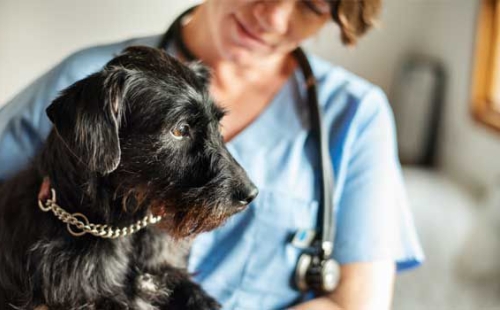Financial Efficiency: How to Optimize Your Veterinary Practice’s Monthly Revenue Cycle

The business of veterinary medicine is a delicate balancing act between delivering exceptional veterinary care and ensuring operational and financial success. Each month, your practice needs a steady income to pay staff, order supplies, maintain the building, and generally keep things running smoothly.
Financial efficiency and an understanding of the hospital’s revenue cycle are critical skills for veterinary leaders. Knowing how money flows in and out of the business, and taking steps to improve cash flow, can reduce stress, eliminate surprises, and support practice profitability.
What is the veterinary revenue cycle?
The veterinary revenue cycle, an accounting term borrowed from human medicine, includes everything you do to generate income from clients. The cycle considers all aspects of service delivery and payment collection, starting from the moment a pet owner books an appointment and ending with the final payment collection.
Veterinary revenue cycle management ensures that the process runs smoothly and efficiently, allowing you to provide outstanding patient care and establish a consistent cash flow for long-term financial stability.
Here are five steps you can take to improve financial efficiency through better veterinary revenue cycle management.
1. Capture more charges
Missed charges happen when staff members forget to enter all services on a patient’s invoice. It’s easy for a technician or veterinarian to get distracted on a busy day or overlook a vaccine or add-on nail trim for a pet receiving multiple services during an annual preventive care visit, or an extra test ordered at the last minute for a sick pet.
Use your veterinary practice management system (PIMS) to create charge packages for common visit types. Team members can choose the package on the invoice and select or deselect the services performed. Another way to prevent missed charges is to take advantage of cloud-based software systems that automatically populate invoices based on medical record entries.
2. Optimize scheduling and reminders
Every unfilled appointment slot is a missed revenue opportunity. Online appointment scheduling, automated text and email reminders, and easy digital check-in tools help to keep your practice’s schedule full. Choose modern practice management software with automation built in to minimize software friction.
Many practice owners and leaders hesitate to give up manual control of the schedule, but most online systems have customizable guardrails to keep the schedule in check. They can often do this more efficiently than your CSRs, freeing them up for tasks that require a human touch.
3. Set prices thoughtfully
Veterinary clinic prices directly impact revenue and financial efficiency, but pricing is harder than it looks. Charges must reflect the value of your skilled services and veterinary professional team. However, they should not be so high that the average pet owner can’t afford to visit. Try to align prices with local and veterinary industry benchmarks.
Train staff to explain costs clearly to clients, especially for higher-ticket veterinary services like dental cleanings or imaging. Effectively communicating the value of your services to clients and the “why” behind recommendations leads to lightbulb moments, making pet owners more likely to accept healthcare plans that benefit their pets and your bottom line.
4. Offer flexible payment options
Veterinary revenue cycle management requires that clinics make it easy for pet owners to pay their bills. A client faced with limited options may not be able to pay at the time of service, and outstanding receivables can throw off the books. In addition, new clients or existing pet owners may decide that payment hassles aren’t worth a return visit for future services.
Your veterinary hospital should offer:
- Debit and credit card payments
- Online portals and text-to-pay
- Wellness plans and prepayment packages
- In-house or third-party financing
5. Improve client communication
Every client interaction contributes to the success of the revenue cycle, including those that occur between visits. Follow-up calls, appointment confirmations, medical record sharing, and reminders about upcoming pet care each provide team members with the opportunity to improve compliance and client satisfaction, which then contribute to financial efficiency.
Keep pet owners engaged and informed by using your PIMS to:
- Send personalized emails or texts after visits
- Share discharge instructions, lab results, or treatment plans
- Forward-book the next check-up
Small changes, lasting impact
You don’t need an accounting degree to improve veterinary revenue cycle management in your vet clinic. Focusing on practical and impactful yet easy-to-implement changes can boost the hospital’s financial efficiency, keep clients happy, and reduce stress on your team for long-term financial health and success.



